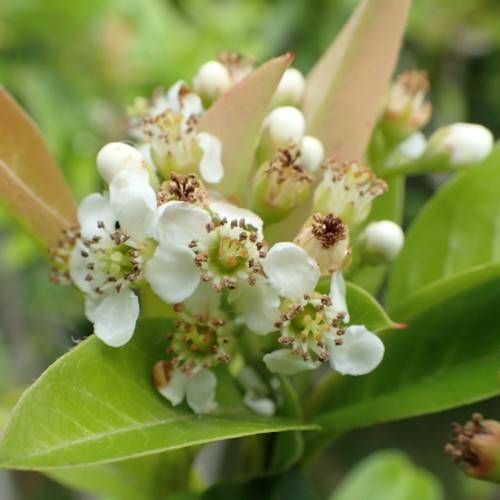
Chinese photinia
Stranvaesia davidiana var. davidiana
Cycle:
Perennial
Watering:
Average
Hardiness Zone:
7 - 9
Flowers:
Flowers
Sun:
Full sun,part shade
Leaf:
Yes
Growth Rate:
High
Maintenance:
Moderate
Care Level:
Medium
watering
Water your Chinese photinia deeply and thoroughly every 7–10 days during its first growing season in order to help the roots establish. During the second year and onwards, the plants can go between 7–14 days without supplemental water, but be sure to check the soil moisture before watering. Irrigate the plants slowly and deeply to allow the water to penetrate the soil and reach the roots of the plant. Always check the soil moisture with your finger before watering to insure that the soil is dry before irrigating; overwatering can cause root rot.
sunlight
Chinese photinia (Stranvaesia davidiana var. davidiana) is an evergreen shrub which needs full sun for optimal growth. The plant prefers a minimum of 6 hours of direct sunlight each day. Direct sunlight in the morning and partial shade in the afternoon is ideal. Too much shade will cause the plant to become lanky and have fewer flowers, while too much sun can cause leaves to turn yellow or scorch. The Chinese photinia is as easy to grow as it is beautiful, but make sure to water it deeply during summer months to ensure its health.
pruning
Chinese photinia (Stranvaesia davidiana var. davidiana) should be pruned during the late spring or early summer season after the new growth is established. Pruning should be done while the plant is still young, and should generally involve removing any overcrowding, crossing, or dead branches throughout the season. For an established plant, selective pruning can be used to control growth and promote bushiness. Heavy pruning cuts should be avoided, and should only be used for shaping or moderating the size of the plant. Pruning should also be done throughout the summer to control the shape of the plant. Chinese photinia responds best to light pruning year after year and should not be heavily pruned in order to promote healthy growth and rejuvenation.
